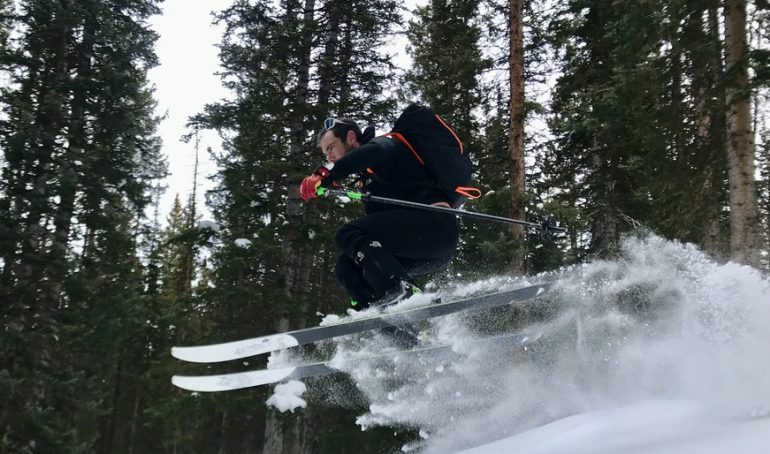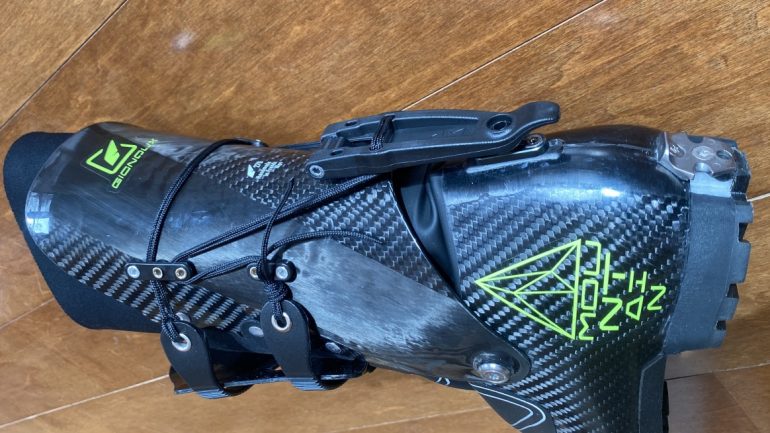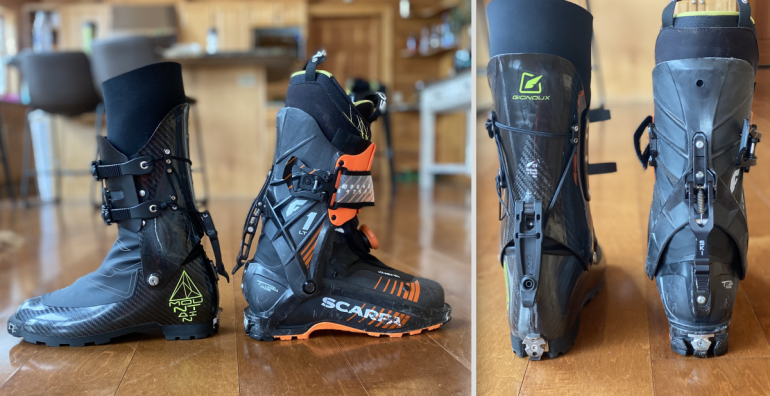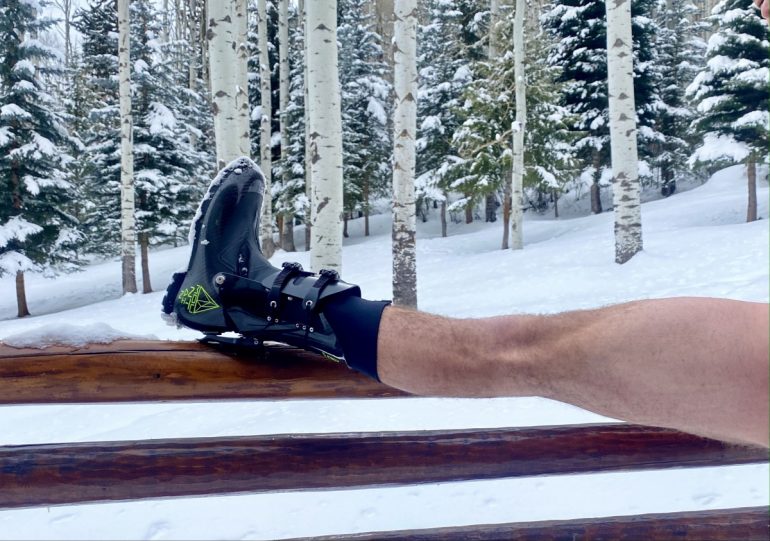Pulling into Moe’s Bagels in Boulder, fresh off my one-way flight from the east coast as a young 22 year old, I looked around in awe at the fleet of carbon road bikes carelessly corralled against the railings. Just as I was fully kitted out in Prana organic wool for 30-foot, single-pitch, well-bolted sport climbs, so too were my spandex laden friends for their 30-mile pre-beer lunch rides. It was already then that I realized the slimming aesthetics of skin tight clothing worn confidently and definitely even if barely concealing an ever present if not inexplicably toned beer gut. I also knew from a young age that the real goal in life was to grow old doing what you love and one day be able to afford and corral a carbon steed of my own.
However, as I grew into my own early middle age and ever deeper into the outdoor gear industry, my ambitions turned to bringing the unadulterated confidence observed on the cream cheese-soaked pavement patio in Boulder to the sport of ski touring. Although spandex on the backcountry skin track is no longer unheard of, we still have a long way to go. But with the creation of the Mountain, the world’s first carbon freeride touring boot by Pierre Gignoux, at least the carbon slippers have a chance to make it onto the every-skiers feet.
Overview
Pierre Gignoux has an illustrious history of making race carbon ski shoes (calling them boots doesn’t do them justice) for the top level athletes in the world. Seven years ago I donned my first pair of Pierre Gignoux Morpho 400s in an attempt to prove that carbon really could buy happiness (if not a modicum of athletic success and at least delay the inevitable health food diet). However, the irony of a mid pack athlete unnecessarily skiing the world’s lightest boot was lost on a crowd who still thought the act of skinning was to “earn your turns” instead of a sport in and of itself. Years later, rando races in the US are still fringe, but the appetite for weight savings to gain extra precious powder laps is growing every year.
From the moment I unboxed these ski boot stilettos, the tagline “100% Pleasure” from the Pierre Gignoux website rang true. A beautifully sculpted handmade full carbon boot started up at me and I knew the Mountain was the boot to bring carbon fibre in the United States to the dozens if not the masses.
The Mountain features a higher cuff, an extra buckle and a taller liner than any boot created by Gignoux before, yet it still comes in at an impressive 740 grams. A 100% carbon fiber upper cuff attaches with two low friction pivots to a 100% carbon fiber lower and uses a classically “Gignoux” string system to tie it all together into a one lever throw between walk and ski. Unlike the racier boots in its family, the full zip gaiter subtracts from snow in your boot while definitely adding to overall sex appeal.
Boot Design
This design does a shockingly impressive job at simulating a progressive forward flex. For a 740-gram boot in a 27.0, (yes I did weigh it, and for the first time ever it came out exactly as advertised) the cuff height and stiffness of the Mountain is beyond impressive. Equally impressive is how hard it is to put it on. After 12 years of working in ski touring specific shops, I would like to believe I have received my Master’s degree in boot-putting-onology and I am darn close to my doctorate. Even with my higher levels of learning, getting my foot in this boot is a struggle. The retention system to prevent foot slippage is all internal to the high gaiter and it’s easy for straps and pull tags to fold under the liner when you put it in. Once you get over the adrenaline rush of putting on a sexy black boot and take the time to figure out the straps, it is admittedly a practical system.
Although there are two buckles and a much higher cuff, they only go across the top of the boot. The above mentioned lacing and velcro system does not give the same secure feeling of an instep buckle or boa system. Because these tightening straps and laces are under the sleek shin high gaiter, it is quite frustrating to adjust tension during a long tour.
The ball and socket walk lever is quick and easy to use when throwing it from ski to walk. It does take a slight bit more guidance than a typical hook and bar mechanism which has become ubiquitous in manufacturers such as Scarpa, Tecnica and Fischer to name a few. If you are too hasty in a transition flexing the boot forward but slightly internally will cause you to miss the catch. When I was using it as a race boot, I found myself careening down a cat track in the dark, my headlamp glued to my boot cuff as I struggled to send it home. It does seem that more torsional stiffness in the boot is derived from lower tolerances given the ball and socket mechanism.
Fit
In my excitement to get my hands on a pair of these boots, I sprayed my boot size over the phone with little thought. I wear a size 27 across almost all ski boots except in a full alpine boot (which I haven’t worn in 6 years) where I would slam my foot into a 26. I wear a street shoe between a size 11 and 11.5 even while consistently ripping through the fabric at the 6th toe in all their Hobbit splendor. On a measuring device my toe creeps up the the 28 line, but whether through extreme fortune as a boot tester, mind over matter, or just because I have severed the nerve roots in my feet through countless tours, I never have any problem down sizing even narrow boots. DO NOT DOWN SIZE the Pierre Gignoux Mountain.
The first time I put these boots on in the living room, I almost wept out of pain and disappointment that I was going to need to pawn this review off on a smaller-foot colleague. The external shell of the boot was narrower than my foot fully weighted, but the tightest dimension was the vertical toe box itself. The inner lacing system dug into the top of my foot and only after a very aggressive heat mold could I test the ski potential even while fighting through consistent numbness in my bigger left foot.
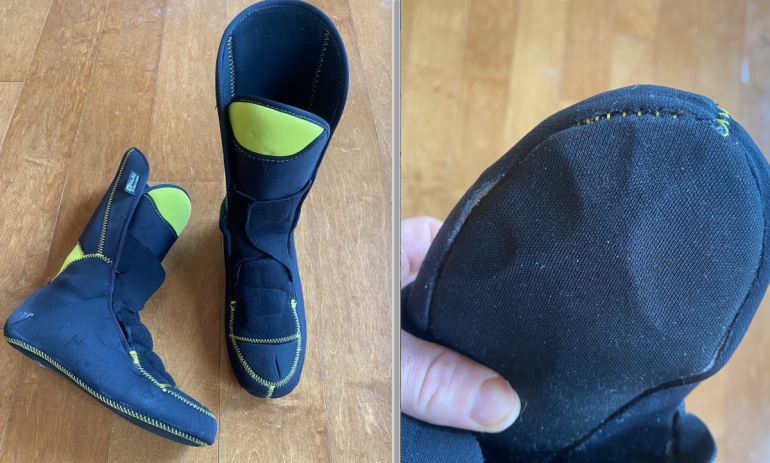
For an ultra thin liner these boots can really hold a heat mold! I used them with out a footbed for volume concerns and you can see the indent of each toe and the lacing marks on the tongue.
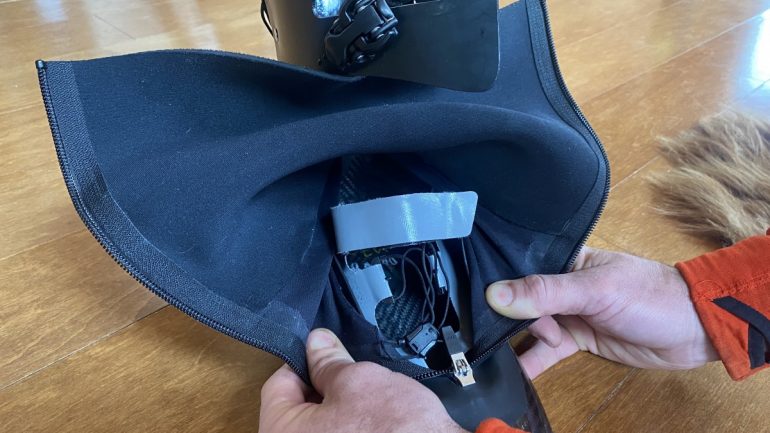
Lacing as close to the foot as possible is the idea, but care must be used to make sure no straps or tabs are folded under the liner.
Uphill Performance
Again this is not a “race” boot, although an uncultured American swine like myself has already used it as such. It does however come in at a confirmed 740 grams in a size 27.0. It also has a range of motion that far exceeds the non double jointed human ankle and almost a zero resistance pivot that blows away my Alien RS sitting idle in the closets. One strange feature of the uphill performance was almost a built in compliance of the carbon on lower angle skinning. The boot seemed to flex slightly under the ball of the foot, but this feeling was not present on steeper skin tracks.
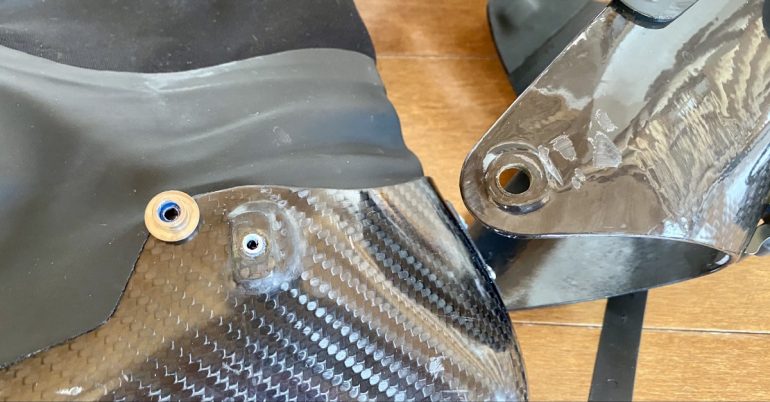
The low friction pivot of the cuff is unfortunately reliant on the metal pushing sliding inside the carbon hole. In other carbon boots I have seen this become a weakness and the carbon will wear out and play can increase over time.
Downhill Performance
Of course an all-carbon French boot is light on the up, but the real purpose in designing the Mountain was to make a boot that skied down and could push a bigger ski. I tested it with a Dynafit DNA race ski first, and I felt like it over powered my little toothpicks. After the tragically low snow January, I paired the boot with an all rock ski quiver consisting of a 182 cm Dynafit Cho Oyu (89 underfoot) and a 178 cm pair of Kastle TX98 skis (98 underfoot). The boot drove both skis admirably and I never noticed the complete lack of intact edges or missing base material lost in testing.
In all honesty, while descending the chunky frozen tracks of our local backcountry powder stash-turned-mogul field, I did not look good nor do these boots justice. It was easy to get bucked around, but I was more focused on my own downhill technique and didn’t realize until later I was never focused on the boot. After the first day of testing, my early assessment was I would have preferred my Scarpa F1 LTs as they were a bit warmer and more comfortable and probably would ski a bit better. The next day I was back to the same skin track in my trusty Scarpas and proved it truly was the archer and not the arrow that was the problem. On the same ski run I had felt solidly more in control on the Gignoux than my other light boot. They initiated jump turns quicker and were more lively than the Scarpas.
Sadly, I have one more dark confession beyond my personal skiing in the less than ideal snow conditions currently in Colorado. The Pierre Gignoux Mountains were the first boot that made me actually contemplate the ramp angle of a Dynafit Speed Radical binding that has received so much perseveration on this website. Dismayed that I would have to use the dreaded toe shims to compensate for its generous forward lean, an email to France and a small metric allen key lead me to the realization that there are actually four distinct forward lean angles while skiing. Choosing the 15 degree placement from the 19, 17, 15 and 13 degree options, my quads were totally saved and I fully fell in love with the balance and control I felt while entering each turn of tooth chattering bliss.
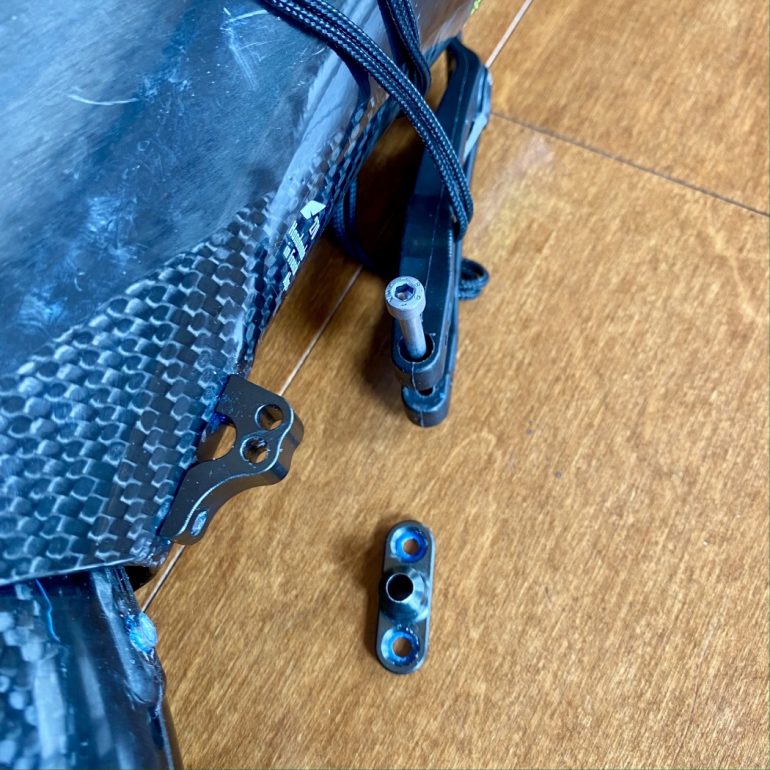
Two distinct positions are available for the bolt to slot through, but flit the pivot piece around and you can access two more.
Conclusion
“These boots are too expensive!” I can already hear the shouts from the rolled down windows of [insert standard Colorado adventure wagon here] with empty roofs where carbon fiber bikes were posted just months ago. At just under 1700 Euros (1541 for the boot and 120 for shipping and beware there are sometimes variable US import taxes on arrival) or about $2000 USD I would almost agree with them. However, these carbon bone crunching slippers are true works of art, hand built in France and meticulous in workmanship. As we saw with their early race boots from 10 years ago, Pierre Gignoux’s super niche design has spread out to influence entry level rando boots and many touring boots hovering around 1000 grams. In its present day iteration, the Mountain scratches the surface of using ultra thin carbon fiber to create the same skiing feel as its polyurethane ancestors and leaves me excited for where the future of boot design is heading.
Although, these boots will still only be sold as a direct buy from France, one single shop in the U.S. is locking down a test fleet so if you can get to Aspen Highlands in Colorado you at least wont make the same sizing mistake that I did.
Perhaps a better testament to the Mountain’s skiing prowess came not from my semi-brag, self depreciating humor, but when I leant them to my ex-racer and far better skiing friend for a long powder day in the backcountry. He was skiing them on a pair of 184cm, 104mm underfoot 4FRNT Ravens. Did he like them? Well, he absconded with them and I haven’t seen them since. In reality this boot is perfect for getting an extra lap for the perpetually powder starved and powder obsessed North American backcountry skier. When conditions are soft and the skiing is easy, a higher cuff carbon boot is really all you need for that coveted extra lap.
In summation, this boot is truly unique as it is several hundred grams lighter than its closest skiing competitor. The equation becomes grams versus warmth, ease of entry and unmodifiable carbon discomfort. One thing is for sure: the Pierre Gignoux Mountain will leave you feeling as fast as it does sexy.
Doug Stenclik is an avid skimo racer and ski mountaineer who lives for sharing the amazing sports of ski touring and splitboarding. Since his first time on skins he was hooked and the obsession has taken him all over the United States and the world pursuing the human powered ski turn. He founded Cripple Creek Backcountry in 2012 and took over the Colorado Ski Mountaineering Race Cup in 2014 to spread knowledge and the love of the sport. In 2019 he took a step back from the ski shop and race promoter life to become a publishing partner with WildSnow.

